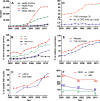Human resource development for a community-based health extension program: a case study from Ethiopia
- PMID: 23961920
- PMCID: PMC3751859
- DOI: 10.1186/1478-4491-11-39
Human resource development for a community-based health extension program: a case study from Ethiopia
Abstract
Introduction: Ethiopia is one of the sub-Saharan countries most affected by high disease burden, aggravated by a shortage and imbalance of human resources, geographical distance, and socioeconomic factors. In 2004, the government introduced the Health Extension Program (HEP), a primary care delivery strategy, to address the challenges and achieve the World Health Organization Millennium Development Goals (MDGs) within a context of limited resources.
Case description: The health system was reformed to create a platform for integration and institutionalization of the HEP with appropriate human capacity, infrastructure, and management structures. Human resources were developed through training of female health workers recruited from their prospective villages, designed to limit the high staff turnover and address gender, social and cultural factors in order to provide services acceptable to each community. The service delivery modalities include household, community and health facility care. Thus, the most basic health post infrastructure, designed to rapidly and cost-effectively scale up HEP, was built in each village. In line with the country's decentralized management system, the HEP service delivery is under the jurisdiction of the district authorities.
Discussion and evaluation: The nationwide implementation of HEP progressed in line with its target goals. In all, 40 training institutions were established, and over 30,000 Health Extension Workers have been trained and deployed to approximately 15,000 villages. The potential health service coverage reached 92.1% in 2011, up from 64% in 2004. While most health indicators have improved, performance in skilled delivery and postnatal care has not been satisfactory. While HEP is considered the most important institutional framework for achieving the health MDGs in Ethiopia, quality of service, utilization rate, access and referral linkage to emergency obstetric care, management, and evaluation of the program are the key challenges that need immediate attention.
Conclusions: This article describes the strategies, human resource developments, service delivery modalities, progress in service coverage, and the challenges in the implementation of the HEP. The Ethiopian approach of revitalization of primary care through innovative, locally appropriate and acceptable strategies will provide important lessons to other poorly resourced countries. It is hoped that the approaches and strategies described in this paper will aid in that process.
Figures

References
-
- CSA. Ethiopia Demographic and Health Survey Report. Addis Ababa, Ethiopia: Central Statistical Agency; 2010. p. 2000.
-
- FMOH. Program Action Plan of Health Sector Development Program. Addis Ababa, Ethiopia: FMOH; 1998.
-
- FMOH. Health Sector Development Plan, 2005/6-2010/11, Mid-Term Review. Addis Ababa, Ethiopia: FMOH; 2008.
-
- FMOH. Health and Health Related Indicators of Ethiopia. Addis Ababa, Ethiopia: FMOH; 2011. p. 2000.
Publication types
MeSH terms
LinkOut - more resources
Full Text Sources
Other Literature Sources
Medical

